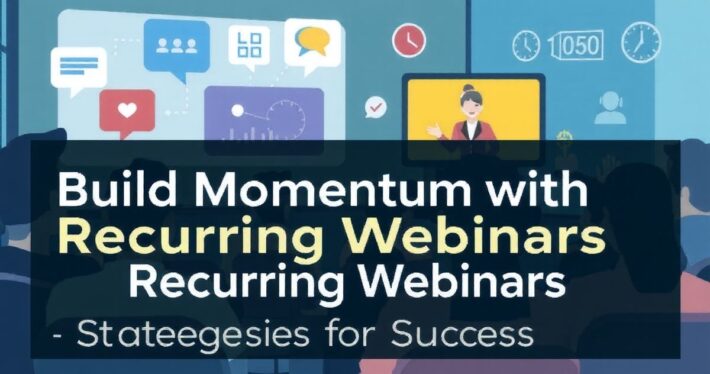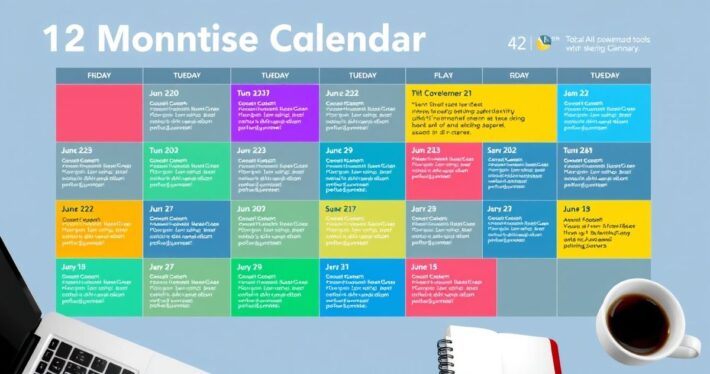Strategies for scaling webinar attendance without increasing costs.

Let’s face it: webinars are one of the most powerful tools in a marketer’s arsenal. They combine education, engagement, and conversion opportunities into a single, dynamic format. But here’s the catch—scaling webinar attendance often feels like a balancing act between impact and investment. The good news? You don’t need a massive budget to fill your virtual seats. With the right strategies, you can scale your webinar attendance without increasing costs. Let’s dive into how.
1. Leverage Your Existing Email List
Your email list is gold—don’t let it sit idle. Whether you have 500 or 50,000 subscribers, this is your most cost-effective way to drive webinar attendance. Start by segmenting your list based on interests, past behavior, or engagement levels. Then, craft personalized email sequences that highlight the value of your webinar.
For example, send a teaser email with a compelling subject line like, “Discover the Secret to [Benefit] in Just 60 Minutes.” Follow up with a reminder email that includes social proof (e.g., “Join 500+ professionals who’ve already registered!”). Finally, send a last-chance email with a sense of urgency.
Pro tip: Use A/B testing to optimize your subject lines and CTAs. You’d be surprised how small tweaks can dramatically boost open and click-through rates.
2. Harness the Power of Social Media
Social media platforms are essentially free megaphones for your webinar. But here’s the key: don’t just post and pray. Instead, create a strategic promotional plan.
Start with engaging teaser posts that highlight a problem your webinar solves. For example, “Struggling with [Challenge]? Join our free webinar to learn the solution!” Use eye-catching visuals, short videos, or even countdowns to build anticipation.
Encourage your audience to share your posts by tagging friends or colleagues who might benefit. You can also join relevant Facebook or LinkedIn groups (with permission, of course) to share your event with a highly targeted audience.
3. Optimize Your Landing Page for Conversions
Your landing page is your virtual storefront—it’s where your audience decides whether to commit or bounce. To maximize registrations without spending a dime, focus on these elements:
- Headline: Make it benefit-driven and specific. For example, “Learn How to Scale Your Business in 30 Days” is far more compelling than “Webinar Sign-Up.”
- Social Proof: Include testimonials, logos of past attendees, or statistics like “Over 1,000 attendees in our last webinar!”
- Call-to-Action (CTA): Use action-oriented language like “Reserve Your Spot Now” or “Join the Free Webinar Today.”
A well-optimized landing page can significantly increase registrations without requiring additional ad spend.
4. Collaborate with Strategic Partners
Partnerships are one of the most underrated ways to scale webinar attendance. Look for non-competing businesses or influencers in your niche who share a similar audience. Propose a co-hosted webinar where you both promote the event to your respective lists.
For instance, if you’re hosting a webinar on content marketing, partner with a graphic design expert to attract their audience. This way, you get access to a new pool of potential attendees without spending money on ads.
5. Implement Email Automation
Automation is your secret weapon for scaling attendance. Use tools like Mailchimp, ActiveCampaign, or ConvertKit to set up a series of automated emails that nurture leads from initial registration to the day of the webinar.
Here’s a simple sequence:
- Welcome Email: Thank them for registering and include a calendar invite.
- Engagement Email: Share a sneak peek of the content or a short video teaser.
- Reminder Email: Send 24 hours before the event with the link and tips for attending.
- Last Chance Email: Send 1 hour before the webinar starts.
Automation ensures you stay top of mind without spending extra time or money.
6. Repurpose Existing Content
Why reinvent the wheel when you can repurpose what you already have? Turn blog posts, case studies, or YouTube videos into webinar content. For example, if you have a popular blog post on “5 Strategies for Remote Work Productivity,” expand it into a webinar with actionable tips and real-world examples.
Promote the webinar as a “deeper dive” into a topic your audience already loves. This not only saves time but also resonates with your audience because they already trust the content.
7. Use Gamification to Drive Registrations
People love a little competition. Create a referral program where attendees can earn rewards for bringing friends. For example, offer a free resource, discount, or exclusive access to a bonus session for every referral who registers.
You can also create a leaderboard to track top referrers and add a sense of friendly competition. This approach encourages word-of-mouth marketing, which is both effective and free.
8. Focus on Evergreen Webinars
Instead of hosting live webinars every month, consider creating an evergreen webinar—a pre-recorded session that attendees can watch anytime. This allows you to promote the webinar continuously without having to host it repeatedly.
Use tools like WebinarJam or Demio to create evergreen webinars that still feel interactive. Add polls, Q&A sections, and downloadable resources to maintain engagement.
9. Leverage Internal Networks
Don’t overlook your internal networks—your employees, colleagues, and personal connections can be powerful advocates. Encourage your team to share the webinar with their networks and provide them with ready-to-use templates or posts.
10. Analyze and Optimize
Finally, measure what works and double down on it. Use analytics tools to track registration sources, attendance rates, and engagement metrics. Identify which strategies drive the most sign-ups and focus your efforts there.
For example, if you notice that Facebook posts generate more registrations than Twitter, prioritize your time and energy accordingly. Continuous optimization ensures you’re getting the most bang for your (non-existent) buck.



